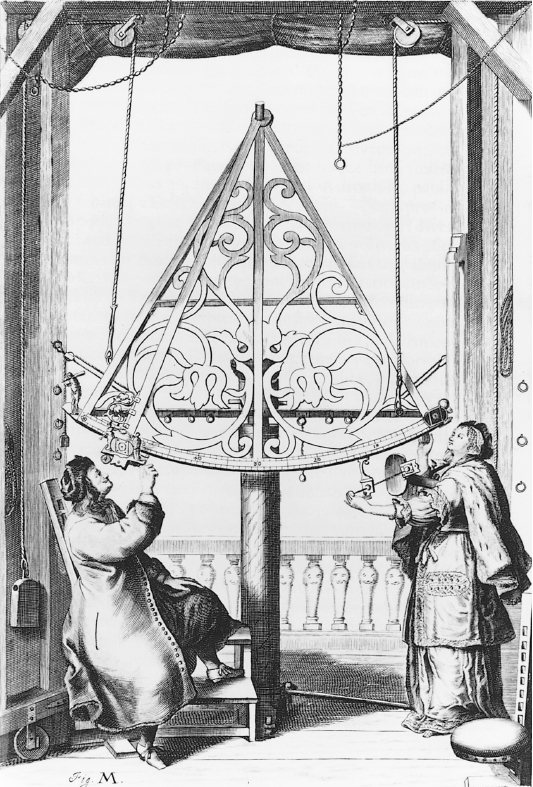Understanding Western Society
Printed Page 490
Brahe, Kepler, and Galileo: Proving Copernicus Right
Born into a Danish noble family, Tycho Brahe (TEE-
Upon the king’s death, Brahe acquired a new patron in the Holy Roman emperor Rudolph II and built a new observatory in Prague. For twenty years, Brahe meticulously observed the stars and planets with the naked eye, compiling much more complete and accurate data than ever before. His limited understanding of mathematics and his sudden death in 1601, however, prevented him from making much sense out of his mass of data.

It was left to Brahe’s assistant, Johannes Kepler (1571–
Kepler’s contribution was monumental. Whereas Copernicus had used mathematics to describe planetary movement, Kepler proved mathematically the precise relations of a sun-
Beyond his great contribution to astronomy, Kepler pioneered the field of optics. He was the first to explain the role of refraction within the eye in creating vision, and he invented an improved telescope. He was also a great mathematician whose work furnished the basis for integral calculus and advances in geometry.
Kepler was not, however, the consummate modern scientist that these achievements suggest. His duties as court mathematician included casting horoscopes, and he based his own daily life on astrological principles. He also wrote at length on cosmic harmonies and explained, for example, elliptical motion through ideas about the beautiful music created by the combined motion of the planets. His career exemplifies the complex interweaving of ideas and beliefs in the emerging science of his day.
While Kepler was unraveling planetary motion, a young Florentine professor of mathematics named Galileo Galilei (1564–
In his early experiments, Galileo focused on deficiencies in Aristotle’s theories of motion. He measured the movement of a rolling ball across a surface, repeating the action again and again to verify his results. In his famous acceleration experiment, he showed that a uniform force — in this case, gravity — produced a uniform acceleration. Through another experiment, he formulated the law of inertia. He found that rest was not the natural state of objects. Rather, an object continues in motion forever unless stopped by some external force. His discoveries proved Aristotelian physics wrong.
Galileo then applied the experimental method to astronomy. On hearing details about the invention of the telescope in Holland, Galileo made one for himself and trained it on the heavens. He quickly discovered the first four moons of Jupiter, which clearly suggested that Jupiter could not possibly be embedded in any impenetrable crystal sphere as Aristotle and Ptolemy maintained. This discovery provided new evidence for the Copernican theory, in which Galileo already believed. Galileo then pointed his telescope at the moon. He wrote in 1610 in The Sidereal Messenger: “By the aid of a telescope anyone may behold [the Milky Way] in a manner which so distinctly appeals to the senses that all the disputes which have tormented philosophers through so many ages are exploded by the irrefutable evidence of our eyes, and we are freed from wordy disputes upon the subject.”2
In 1597, when Johannes Kepler sent Galileo an early publication defending Copernicus, Galileo replied that it was too dangerous to express his support for heliocentrism publicly. The rising fervor of the Catholic Reformation increased the church’s hostility to such radical ideas, and in 1616, the Holy Office placed the works of Copernicus and his supporters, including Kepler, on a list of books Catholics were forbidden to read.
Galileo was a devout Catholic who sincerely believed that his theories did not detract from the perfection of God. Out of caution he silenced his beliefs for several years, until in 1623 he saw new hope with the ascension of Pope Urban VIII, a man sympathetic to developments in the new science. However, Galileo’s 1632 Dialogue on the Two Chief Systems of the World went too far. Published in Italian and widely read, this work openly lampooned the traditional views of Aristotle and Ptolemy and defended those of Copernicus. The papal Inquisition placed Galileo on trial for heresy. Imprisoned and threatened with torture, the aging Galileo recanted.